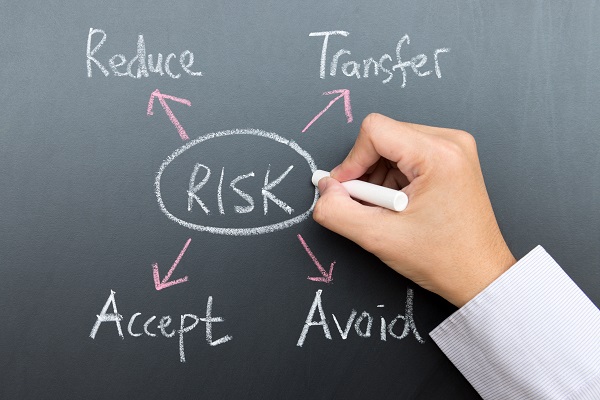Europe’s gas crisis: What is the near-term corporate impact?
The old song in a new voice – the first Monday of September again revived concerns in Europe about energy shortages. The reason was again the suspension of Gazprom’s supplies via Nord Stream 1 – this time for an in definite period. The result: gas prices rose nearly 30% in early trade, oil rallied again, European stocks sank, and the euro hit a new 20-year low against the dollar.
Let’s start with the gas. After natural gas prices on August 29 reached a record 345 euros per megawatt hour on the Amsterdam stock exchange, within a few days the quotations returned by almost 40% to 215 euros on Friday 2nd September. The reason for the decrease in prices may be the filling of reserves in European countries and the increase of supplies from the USA, but another turn of Russia has changed the situation again, Reuters said. The price of natural gas (for delivery in October) is currently around 278 euros per megawatt hour.
The price of oil also rose on Monday. Both main types of oil – WTI and Brent – rose in price by about 2.5%. After oil reached nearly $120 a barrel in June, the market calmed down. Since June, the raw material has fallen in price by nearly 25%, with prices returning to pre-Russian invasion levels. On the one hand, the slowdown in growth in China, on the other hand, high prices at gas stations reduced demand during the summer period, when it is usually highest. All eyes today will be on the OPEC meeting in September, but it is unlikely that the cartel will decide on an increase in supply, which, given the cur rent situation in Europe, explains why the price is rising again.
Uncertainty in the energy industry has had an impact on the stock markets of the Old Continent. Stocks in Paris, Frankfurt and London traded almost entirely in negative territory. Germany’s DAX index opened the session down around 3%, while in France and the UK the down ward movements are more limited – around 1-2%, so far. The pan-European Eurostoxx 50 lost around 2%. Among the few companies enjoying growth, understandably, are energy companies Total, Schell and British Petroleum.
It appears that the change in sentiment from today has not yet reached the US as futures are not showing a decline, but it is very likely that volatility will spill over into the US markets as the day unfolds and domestic trading commences. During the week, the decision of the ECB regarding the increase of interest rates in the
Eurozone was awaited with interest, which will have an additional impact on the performance of stock markets around the world. The US Federal Reserve has already raised interest rates four times this year, while its European counterparts lagged behind with just one hike of 0.5% in July, before this week’s increase. According to which, the interest rate on the main refinancing operations and the interest rates on the marginal lending facility and the deposit facility will be increa sed to 1.25%, 1.50% and 0.75% respecti vely, with effect from 14 September 2022. Things could get worse before they get better, especially if we’re on the brink of a recession, as some analysts fear, sugges ting a more challenging investment envi ronment ahead,” hedge strategists from First Eagle Investments wrote in an August note to clients : “We could be wrong, but we believe the market has underestimated the risks of higher interest rates and a potential recession.”
According to Rhizome Partners, the world is currently entering the next stage of reces sion. The next stage of the bear market will most likely involve lower corporate ear nings due to a more challenging business climate and reduced access to capital, war ned analysts at hedge fund Summer Value Partners.
Whether the economists will be right remains to be seen. But what is the real and concrete impact on the investment funds market? Europe’s precarious gas supply situation has been a prime focus for markets ever since Russia’s invasion of Ukraine at the end of February.
The European Union (EU) and partner countries were quick enough to apply sanctions to Russian oil. However, gas is a more complicated matter given the reliance of major European economies, most precisely Germany, as per its usage of natural gas from Russia. The situation became even more critical when a major supply pipeline, the Nord Stream 1, was closed for maintenance in July this year. While the pipeline has now come back onstream, gas is being supplied at a redu ced volume and even partially stopped. Gas demand became lower in the sum mer, but this reduced supply puts in peril the EU’s aim of filling gas storage sites to 75-80% capacity in November this year, and to 90-93% in 2023. What is the full impact on gas prices in this case and how the derivative products on that assets are strongly influencing those?
Schroders investment experts have their outstanding analysis of what this means for Europe’s economies and markets, including the investment funds one obviously, which is a clear mirror of world economy situation without a doubt. «Europe is facing an 18–24-month period of very high gas and electricity prices», said Mark Lacey, Head of Global Resource Equities. «Europe has become and will remain the premium market for gas over this period, with prices above those in Asia or the US. This premium will last until we start to see meaningful new volumes come onstream from 2024/25.»
High prices can be tackled through two methods: a decrease on demand side or an increase on supply one. European countries are taking steps to tackle the demand side for the time being.
Azad Zangana, Senior European Econo mist and Strategist, said: «EU member states recently agreed to a voluntary 15% reduction in the consumption of gas, but this could become mandatory if supply continues to be disrupted. While energy inflation fell back from 42% year-on-year to 39.7% in the latest reading, we expect further price increases to keep energy and headline inflation elevated in the second half of this year, which in turn will reduce the spending power of households.»
The high prices may in themselves cause demand to drop as users limit their gas consumption at European level, and this starts to look like a generalized picture in several countries already.
Mark Lacey even added: «Following a price increase of around 400% year-on year, it is inevitable that some element of demand is destroyed. Gas demand in Europe will likely fall around 10% in 2022. Even at lower prices, it is unlikely to grow significantly in 2023 given the risk of recession.»
What is the near-term corporate impact?
Germany’s reliance on the Nord Stream 1 pipeline, and lack of alternative options, means it is the major economy most at risk of gas shortages. Earlier this year, the German government unveiled a three step plan for gas rationing that could see supply reduced to industry in order to ensure availability for households and critical institutions like hospitals.
Under such a scenario, energy-intensive sectors such as metals production and chemicals would be the most affected in the short term.
Arianna Fox, European Equities Analyst, said: «The chemicals industry is one that is directly exposed to gas shortage risk given how energy-intensive it is and how so much of the industry is concentrated in Germany. The government could introduce rationing but there are still many questions as to how this would play out.» For example, would all indus tries face the same level of rationing? It might be the case that the government would try to protect industries such as food & beverage production, or healthcare companies. If that’s the case, then other industries like chemicals would have to meet a larger burden, hitting their production harder and in a more consequent way.
«The trouble is that chemicals are used in so many products, industries and processes. Ultimately, every industry would feel the impact of reduced supply or higher prices for chemicals. Businesses could try to import the chemicals they need from outside of Europe but supply chains are still disrupted post Covid, and there’s no guarantee that plants outside Europe have spare capacity.»
Despite the 2,5-year crisis we are cur rently living, since the debut of Covid-19, the war in Ukraine and the consequently gas prices rally, the private equity, ven ture capital and real estate investment funds are blooming. According to the last update from the Commission de Surveillance du Secteur Financier (CSSF) for July 2022, we observe an increase of 4% of the assets under management (AuM) for Luxembourg based UCI, com pared to the figures from June 2022. The “other” assets category is the one pulling the AuM of the funds to those higher skies and is the one all investors’ eyes are staring at in those difficult times for the European economy.







